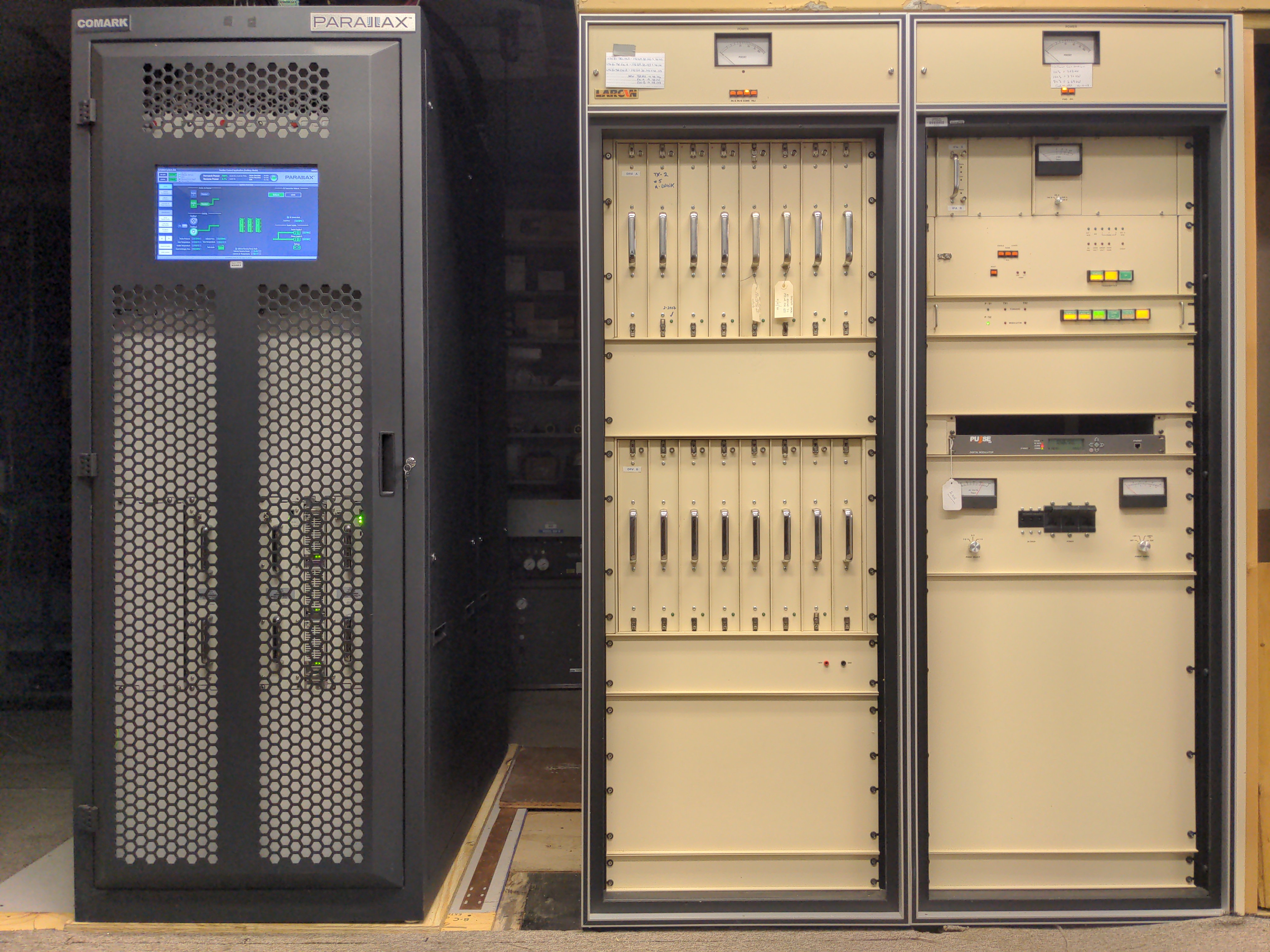WENH-TV Improves OTA Reliability With Hitachi-Comark Parallax
NH PBS station replaces Larcan system with Hitachi-Comark transmitter post repack

DURHAM, N.H.—New Hampshire PBS currently operates three high-power DTV stations plus two LPTV translators across the state to serve Granite state viewers.
During the FCC repack, two of our high-power stations were affected; WEKW-TV in Keene (moved from Channel 52 to 18) and WLED-TV in Littleton (moved from Channel 49 to 23). For these two repack stations, we purchased new main and backup Parallax 5kW liquid-cooled transmitters from Hitachi-Comark. However, our primary station WENH-TV in Durham was not affected by the repack.

WENH signed on Channel 11 on July 6, 1959, making it the first educational television station in New Hampshire and one of the first educational stations in New England outside Boston. Our primary station serves the southeastern area of the state including the state’s largest city of Manchester and Concord, the state capital.
For the analog to digital transition, WENH was assigned Channel 57 during the simulcast period and analog channel 11 was shut off in February 2009. After the transition, we elected to go back to our pre-transition Channel 11; operating two Larcan air-cooled, solid-state DTV transmitters in main-standby mode. Note that these were actually the analog transmitters that we converted for digital operation. These two Larcan systems were originally installed back in 1996 so they were more than past their expected lifetime.
Planning the Upgrade
While looking for a replacement for these old VHF transmitters, we considered the reliability of the Parallax units that we had installed at WEKW and WLED. Both transmitter sites had main and backup DTV transmitters, and since the main transmitters operated so well, we we never had to switch to the backup.
We thought about converting and moving one of the backup units for use at WENH to replace one of the aging Larcans so we contacted Comark who were more than happy to work with us on this unique project. Prior to the conversion, Comark made site visits to WENH and WLED to review the project and develop a cost-effective proposal to complete it.
In late 2022, we signed the contract with Hitachi-Comark. The backup transmitter from our WLED Littleton site was decommissioned; Comark then removed it along with the associated cooling pump system and heat exchanger. It was then returned to their facility in Southwick, Mass. where they converted it from UHF to VHF.
UHF to VHF Conversion
Since the transmitter is modular, the conversion primarily included replacing the internal three-way UHF PA RF combiner system with a new VHF three-way combiner. The rest of the Parallax transmitter was largely re-used. Hitachi-Comark also provided three new VHF liquid-cooled final amplifiers.
Once we converted to the 5 kW system, Comark delivered the new transmitter to our WENH-TV transmitter site. Before installing the new VHF system, Comark removed the existing Larcan air-cooled system as well as the old, unused Harris UHF IOT DTV transmitter and associated RF mask filter. While this sounds like a simple process, the transmission equipment is located on the second floor of our facility with the only access via a hatchway in the floor and a chain hoist.
The newly upgraded Parallax VHF system was installed in place of the Larcan system, connected through the existing VHF RF mask filter system to help keep costs down. The cooling system was installed and the system turned on and the FCC proof-of-performance completed by Comark’s field engineer in March 2023. We’ve since noticed improvement in OTA signal quality.
We’re leaving the second Larcan system as a backup but will likely repeat this process with the backup Parallax system from WEKW in Keene and finally retire it altogether.
Tom Nickodemus is a broadcast transmission engineer at New Hampshire PBS. He can be reached at tnickodemus@nhpbs.org. For more information visit https://comarktv.com.
Get the TV Tech Newsletter
The professional video industry's #1 source for news, trends and product and tech information. Sign up below.
Tom Nickodemus is a broadcast transmission engineer at New Hampshire PBS.
